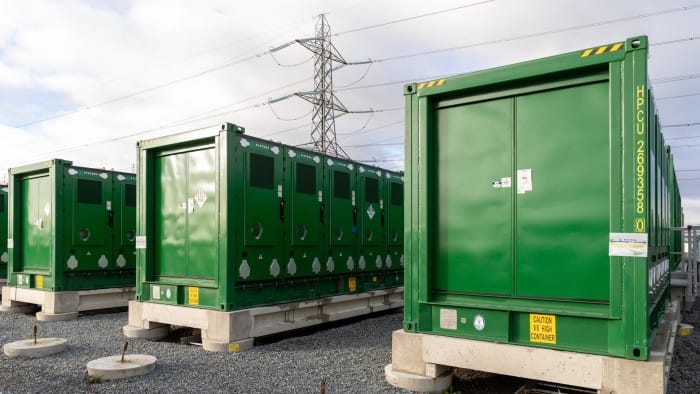Stay informed with free updates
Simply sign up to the UK energy myFT Digest — delivered directly to your inbox.
A record amount of renewable energy capacity has been granted planning permission in the second quarter of this year, in a sign of the growing momentum behind the UK government’s push for clean power.
More than 16.1 gigawatts of new renewable energy capacity spread across 323 projects was given permission to start building during the quarter, according to Financial Times analysis of government data published on Wednesday. The figure for capacity represents a 195 per cent rise on the same quarter last year.
The figures will be welcomed by the government, which wants 95 per cent of Britain’s power generation to be carbon-free by 2030, to meet a flagship Labour party manifesto pledge. However, the speed of grid connections remains an obstacle to projects getting built, as are legal challenges by local opponents of the projects.
Since taking office, ministers have tried to make planning processes faster and less complicated, following complaints from developers that bureaucracy was holding back development.
Chancellor Rachel Reeves is considering reforms that would make it harder for developments to be blocked on environmental concerns, in a sign of how seriously the government is trying to overhaul the system.
Days after taking office, Ed Miliband, energy secretary, granted planning permission for several solar farms, in a big boost to the clean power target.
SSE, one of the UK’s largest offshore wind developers, won approval last month from the Scottish government for its vast Berwick Bank project off the Scottish coast.
The record planning approvals come alongside a surge in planning applications from developers of large-scale batteries to help balance out electricity supplies, and supply power regardless of the weather.
More than 100 planning applications for battery energy storage systems were filed in the UK between April and June 2025, covering a combined 8.4GW of capacity. That is more than twice as much as in the same quarter last year.
To meet its 95 per cent clean power goal, the government estimates Britain will need about 23-27GW of battery storage by 2030, up from about 6GW now. Over the year to June, applications were submitted for 30GW across 400 schemes.
Energy minister Michael Shanks told the FT that “electricity storage is vital for us to be able to utilise cheap renewable energy when we need it most”.
He said the increase in battery projects was “a welcome sign that industry supports our plans and will help to cut our reliance on fossil fuels, deliver energy security and bring down energy bills for good”.
Developers of battery storage have been attracted to Britain by the structure of its energy markets and the growth of wind and solar power, according to investors and analysts. The energy system operator has tried to change its processes to resolve complaints from battery developers that they were being overlooked.
The cost of batteries has also fallen over the past few years owing to imports from China.
“A more renewables-heavy system means more opportunities for arbitrage, and cheap batteries mean a plethora of investors who want to get onboard,” said Adam Bell of Stonehaven.
Many developers also see battery projects as easier to get through the planning process than solar or wind, said Liam Kelly, chief operating officer of Qair, which has built several battery projects mostly located alongside renewable energy sources.
“They’re low-hanging fruit . . . The visual impact everyone gets upset about is lower,” he said.
Battery facilities buy and sell wholesale power and are also paid by the system operator to maintain the grid’s stability.
Average annual battery energy-storage revenues quadrupled to £92,000 per megawatt of capacity in January 2025 compared with 2024, driven by grid stabilising services, according to analysis by Cornwall Insight.


